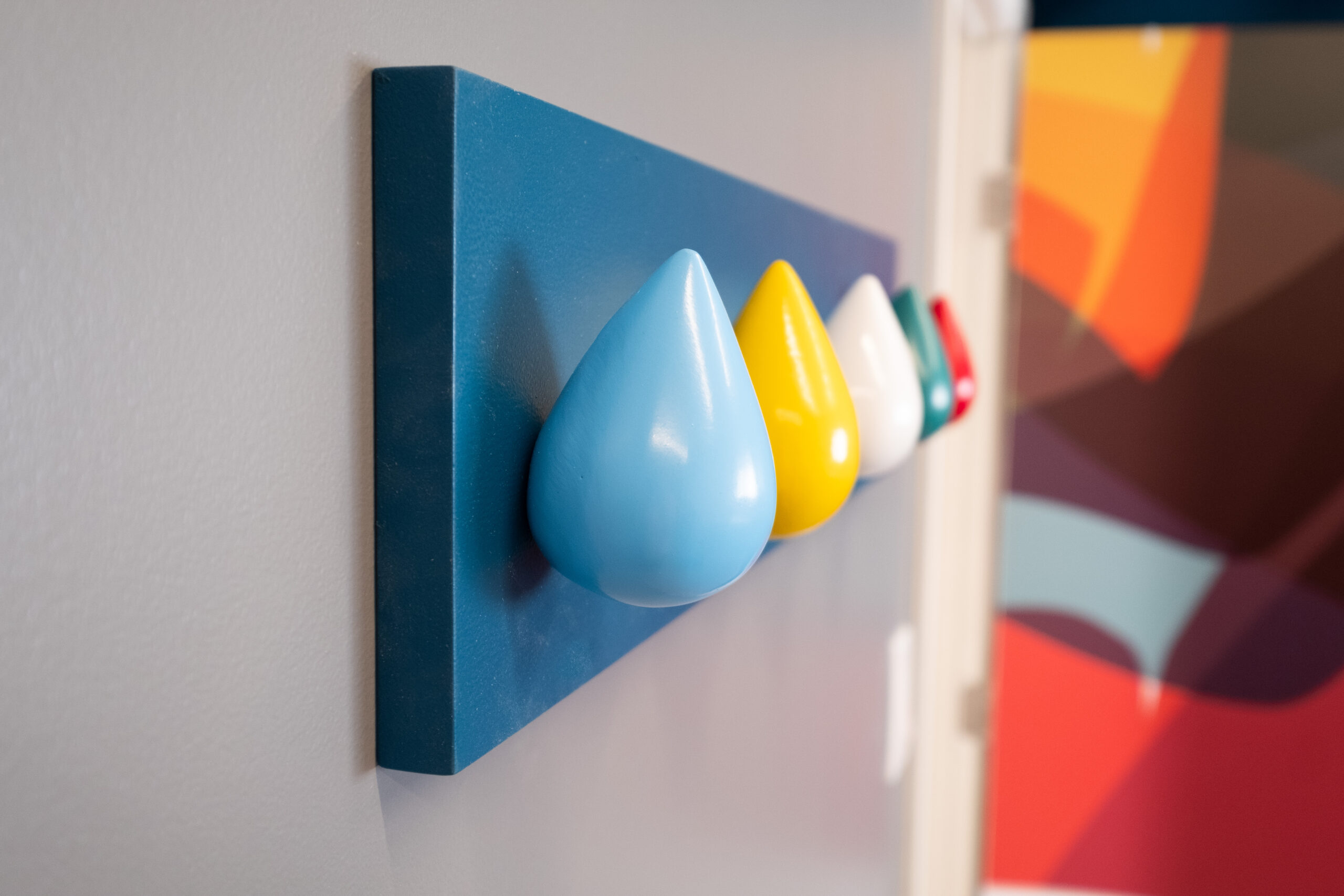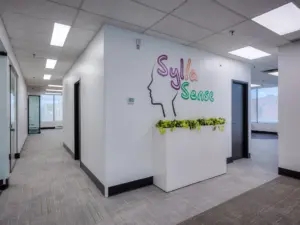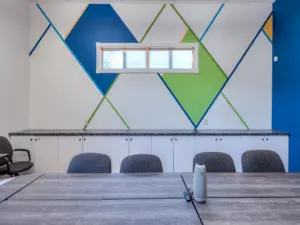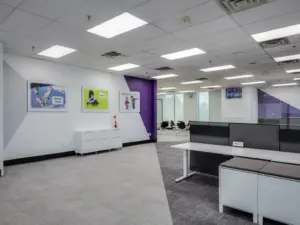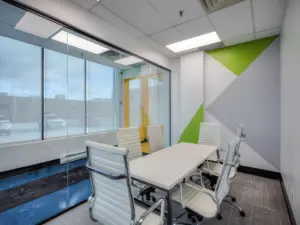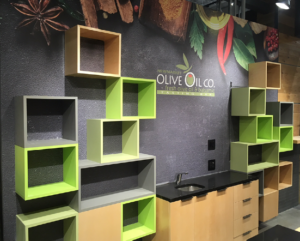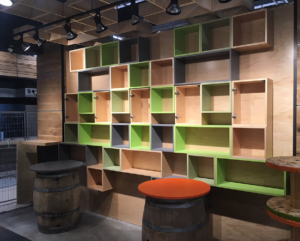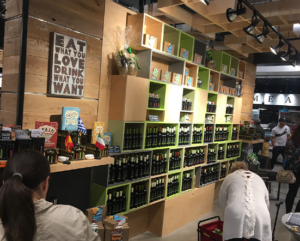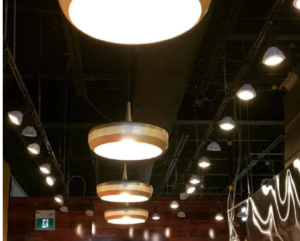Color isn’t just about aesthetics—it’s a strategic tool that shapes mood, productivity, and even workplace culture. Thoughtful color choices can create an environment that fosters focus, creativity, and well-being while reinforcing a company’s brand identity. Here’s how color can be used effectively in office design:
Boosting Productivity & Focus
Blues & Greens – Promote calmness, focus, and efficiency. Ideal for workspaces that require concentration and long hours of deep thinking. These colors can be used on walls, office dividers, and furniture to create a sense of stability and tranquility.
Soft Neutrals – Light grays, beiges, and off-whites create a clean, distraction-free environment that helps employees stay engaged. These hues are often used in minimalist design concepts to provide a modern, sleek appearance.
Encouraging Creativity & Energy
Yellows & Oranges – Stimulate creativity, positivity, and collaboration. Best suited for brainstorming areas or spaces where dynamic discussions take place. Adding these colors through accent pieces like chairs, rugs, or wall art can bring a vibrant touch without overwhelming the space.
Vibrant Reds – Increase energy levels and urgency, making them effective for high-activity zones, but best used in moderation to avoid overstimulation. Consider incorporating red in spaces like break rooms or fitness areas to encourage movement and engagement.
Defining Spaces & Zoning
Accent Walls – A bold color on a single wall can highlight specific areas like meeting rooms, lounges, or focus zones. This technique helps break up monotony and provides visual interest.
Color Blocking – Different hues can be used to subtly distinguish departments, guide movement, or establish purpose within a space. For example, a tech department could feature cool blue tones, while a creative team’s space might incorporate energetic yellows.
Enhancing Brand Identity
An office is an extension of a brand, and incorporating company colors into the design helps reinforce branding while fostering a sense of belonging. Strategic placement of brand colors—whether through walls, furniture, or décor—strengthens company recognition while maintaining a polished and professional aesthetic. Branded office spaces also create a cohesive look that resonates with both employees and clients, making the workspace a powerful marketing tool.
Creating a Welcoming Atmosphere
Earthy Tones & Warm Colors – Deep browns, rust, and terracotta add warmth and make a space feel inviting for both employees and visitors. Wood textures and natural elements paired with these colors create a grounded, home-like ambiance.
Soft Pastels – A more subtle approach, pastels bring a sense of calmness to waiting areas and breakout spaces. These colors work well with natural light to create a refreshing and airy feel.
Improving Well-Being
Biophilic Colors – Shades inspired by nature, such as forest greens, sky blues, and warm wood tones, help reduce stress and increase overall comfort. Offices designed with these colors, along with natural materials and plants, can improve employee well-being and productivity.
Cool Tones in High-Stress Areas – Soft blues or muted greens can make high-pressure environments feel more relaxed, creating a balanced and soothing atmosphere. These tones are ideal for conference rooms, private offices, or wellness spaces.
By leveraging the psychology of color, office design can go beyond functionality and create a workspace that enhances productivity, creativity, and employee satisfaction while strengthening brand identity.
Frequently Asked Questions (FAQ):
What does "Zoning" mean in reference to office design?
In office design, zoning refers to the strategic organization of different areas within a workspace to serve specific functions. It helps create a structured layout that enhances productivity, collaboration, and efficiency by designating spaces for different activities.
Common Types of Office Zones:
- Focus Zones – Quiet areas for deep work, often with soundproofing or minimal distractions.
- Collaboration Zones – Open or semi-private spaces designed for teamwork, brainstorming, or informal meetings.
- Social Zones – Break areas, lounges, or cafés where employees can relax and interact.
- Private Zones – Enclosed offices or phone booths for confidential discussions or one-on-one meetings.
- Transition Zones – Hallways, reception areas, or flexible workstations that guide movement and provide flow between other zones.
Zoning helps businesses maximize space, improve workflow, and create a balanced environment that supports both individual and group work.
What is "Brand Identity" in an office space?
Brand identity in an office space refers to how a company’s values, personality, and visual identity are reflected in its physical environment. It goes beyond just displaying a logo—it encompasses the overall atmosphere, design choices, and spatial organization to create a cohesive brand experience for employees and visitors.
Ways to Incorporate Brand Identity in Office Design:
- Color Palette – Using company colors on walls, furniture, and décor to reinforce brand recognition.
- Materials & Textures – Selecting finishes that align with the company’s image, such as sleek metals for a tech firm or warm wood tones for a wellness brand.
- Graphics & Signage – Incorporating branded artwork, murals, or mission statements to visually communicate company culture.
- Office Layout – Designing spaces that reflect how the company operates, whether it’s an open-plan office for collaboration or structured zones for focus.
- Custom Furnishings – Using unique furniture pieces or fixtures that embody the brand’s style and professionalism.
- Ambiance & Experience – Lighting, scents, and even background music can contribute to a distinct and memorable brand identity.
A well-branded office space strengthens company culture, enhances employee engagement, and makes a lasting impression on clients and partners.
